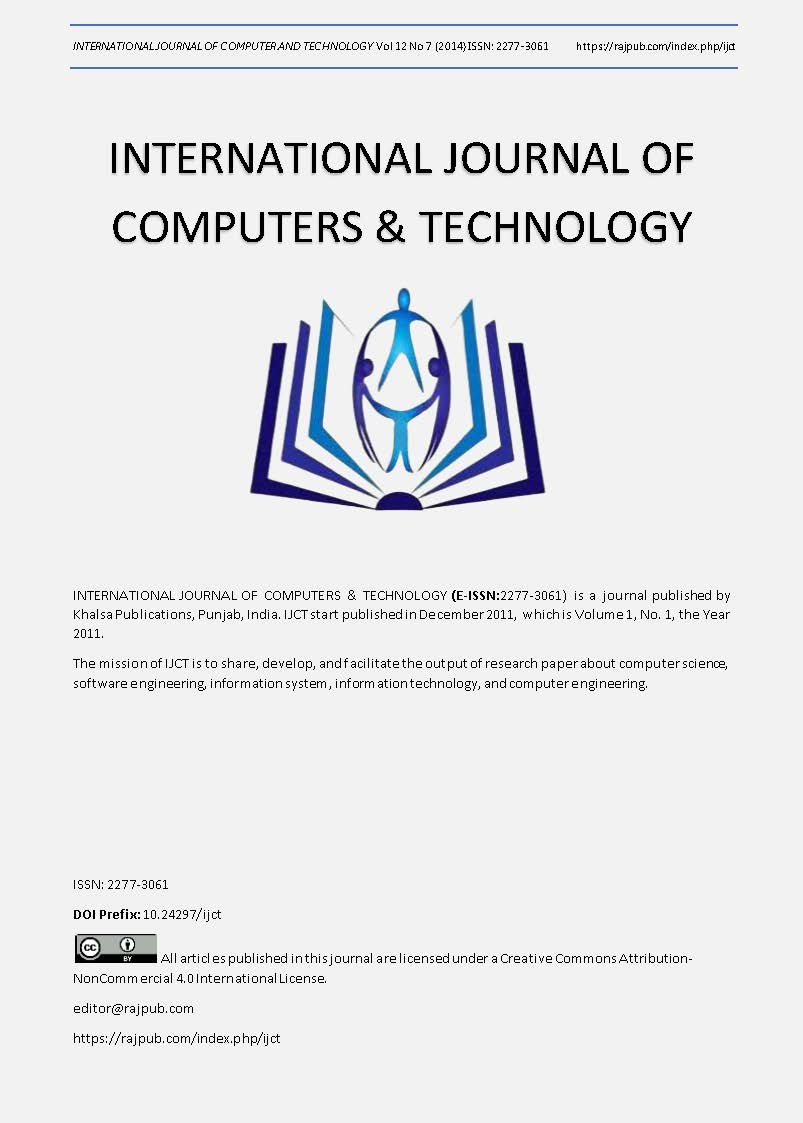GREEN ROUTINGSTRATEGY FOR DYNAMICALLY ARRANGED HOMOGENEOUS WSN- MSCT2
DOI:
https://doi.org/10.24297/ijct.v12i7.3077Keywords:
MSCT2, Clustering of Tiers.Abstract
Wireless networks play a crucial role in the communication systems nowadays. Wireless networks are being increasingly used in the communication among devices of the most varied types and sizes. User mobility, affordability, flexibility and ease of use are few of many reasons for making them very appealing to new applications and more users everyday. A Wireless Sensor Network (WSN) is composed of sensor nodes spread over the field to sense the data. The sensed data must be gathered & transmitted to Base Station (BS) for end user queries. The used sensor nodes being in- expensive having low computation power & limited energy so are not as much reliable as their expensive macro sensor counter parts but their size and cost enable hundred to thousand of micro sensors to achieve high quality fault tolerant system. In an environment where in each round all sensor nodes have to send data to base station; it is required to effectively utilize energy of sensor nodes so as to increase the life- time of the system. The use of data aggregation & fusion as proposed in LEACH increases system lifetime by a factor of 8 as compared to conventional routing protocols. In this work, our main focus is the static sensors are randomly selected and the base stations have their information all a priori. Basically, the sensors are in direct communication range of each other and can transmit to and receive from the base station. The nodes periodically sense the environment and have always data to send in each round of communication. The nodes fuse/ aggregate the data they receive from the others with their own data, and produce only one packet regardless of how many packets they receive. The problem is to find a routing scheme or an efficient protocol to deliver data packets collected from sensor nodes to the base station. It maximizes the lifetime of the sensor network under the system model given above. However, the definition of quality of service of the sensor network provides is not specified. Secondly, where the nodes are densely deployed, the quality of the system is affected as soon as a significant amount of nodes die, since adjacent nodes record identical or related data. In this case, the lifetime of the network is the time elapsed until half of the nodes or some specified portion of the nodes die. In general terms, the time in rounds where the last node depletes all of its energy defines the lifetime of the overall sensor network. Taking these different possible requirements under consideration, our work provides a proper timing of all deaths for all algorithms in detail as well as chooses the shortest possible path for communication with better memory management scheme and leaves the decision which one to choose to system designers.









